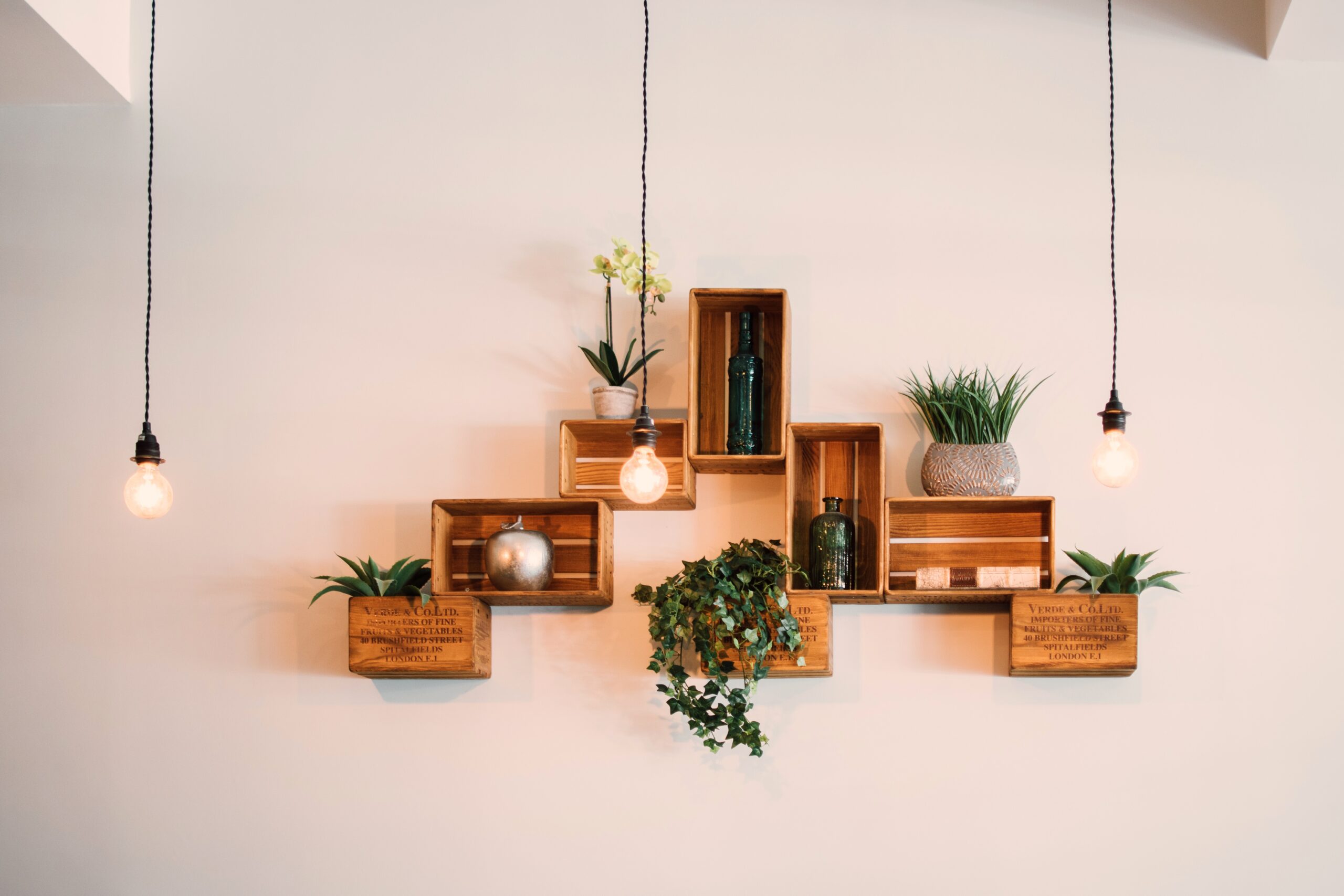We all know that our homes can get overwhelming at times. Not because of the people in it necessarily (although that can happen too, if we’re being honest!), but with all the things we have around. And with “all the things” comes issues with organization. The great news is that there are some pretty minor changes you can implement now to help contain the chaos and get your home back to an organized, happy space for you and your family. Plus, once you organize one area of the home, you’ll find that organization can become contagious. This is a great problem to have when trying to get things in order!
1. Create a designated drop zone for everyone.

When we get home, the first thing people tend to do is drop their belongings wherever they land, creating a trail of backpacks, lunch boxes, briefcases, phones, keys, and other “stuff” all over the house. This leads to not only a mess but also problems when it comes time to find things.
Consider creating a designated drop zone for everyone to place their belongings when they first come home. It could be a space in your mudroom or laundry area. If you don’t have a large space, then you could put a small table in the garage that is labeled with each person’s name. Allow everyone their own space to put their things. It will help prevent clutter upon arrival when home, and it will also help everyone find their things when leaving the next day. When there is a system in place, it’s convenient, and everyone has their own spot, people will learn to use it.
2. Make your departures go more smoothly.
If you’re like us, there are times when we’re caught up in the hustle and bustle of the morning routine. It can be easy to forget things you need when you are simply trying to get on the road. From school notes to important mail to documents you need to drop off, sometimes there are things you have to have throughout your day.
Create an organization system to help you contain all of the things you need before you leave home. This could be a basket or folder near your door or even near your drop zone mentioned in #1 above. It could also be as easy as putting up a chalkboard to write a note on to remind you to take certain items with you.
3. Create kitchen stations.
There is no denying that the kitchen is a hot spot in the home. From meal time to snack time to filling lunch boxes, this is a high traffic zone and can feel busy fast. To make everything go more smoothly, create different stations within your kitchen space. You can get creative with this! Create a coffee (or tea, for the non-coffee drinkers) station. Be sure to have a spot with all the essentials needed. Keeping the coffee drinkers in their station will help free up the rest of the room. If you pack your lunches each day, have a designated area for this as well. If you have to set out items the night before, it won’t be a big burden if you have everything in its spot. If you meal prep, try to clear out a spot in your refrigerator and maybe even a cabinet to have all of your essentials together, making it convenient to work with.
Curb appetites and chaos by implementing a few of these organizational strategies.
4. Create a technology charging station.

Technology and the cords that come with it can become a real eyesore. To avoid having cords stringing from all outlets, create a charging station for your cell phones, tablets, computers, etc. By doing this, you can eliminate the sight of cords and chargers laying everywhere, getting in the way, and falling when someone walks by.
Consider finding a spot in your home that is out of the way where you can create a port for charging all devices. If you have to have some cords showing, try to contain the clutter by bundling them and tucking them in a hidden spot.
5. Tame the toys with baskets.
I know most families can relate to this: the trouble with toys. Yes, we want our kiddos to have fun and use the toys we buy for them. However, they can get out of control at times. The best way to tame the toys is to use totes or baskets to hold the toys when not in use. Sort the toys to keep the same kind together, and be sure to label each basket with the name (or put a picture on them if your little ones are too little to read yet).
By talking to your kids now about putting toys away, you can help teach them organizational skills to help them as they grow. It may take a lot of repetition, but it will be worth it when you are enjoying a walk through your living room with no tripping or injured feet! 😉
6. Create a system for laundry.

Have you ever searched high and low for that one shirt on the day of picture day? Or have you had a sports uniform escape and be no where to be found? It’s time to create a plan!
Consider purchasing everyone their own laundry basket. If you don’t have a whole lot of space, no worries! These can be small baskets. But they will have big benefits. Once the laundry is finished, put each person’s laundry in his or her own basket. This will take out the guess work when it comes time to find that article of clothing. Filtering through one person’s pile of clothes is much easier than rummaging through an entire family’s.
7. Get your emergency contacts and important information organized.
It is our hope that we never need to use emergency contact numbers or need to access important information. However, life happens sometimes, and when you’re in the middle of a crisis, the last thing you need to worry about is searching for the number you need for help or trying to remember medication doses. Create a document with names, numbers, and other important information that you can reference quickly if/when necessary. Consider starting with a paper copy, or even a binder, and then move it over to a digital version that can be accessible by anyone you think needs to have access. Here are some ideas to include on your master list:
- emergency contact information (fire, hospital, etc.)
- school names and numbers
- family doctors (primary care, dentists, etc.)
- veterinarian
- medications and dosage information
- alarm codes
- location of important documents
Looking for other ways to improve the functionality and space of your home? Read 6 Tips to Maximize your Kitchen Space.




